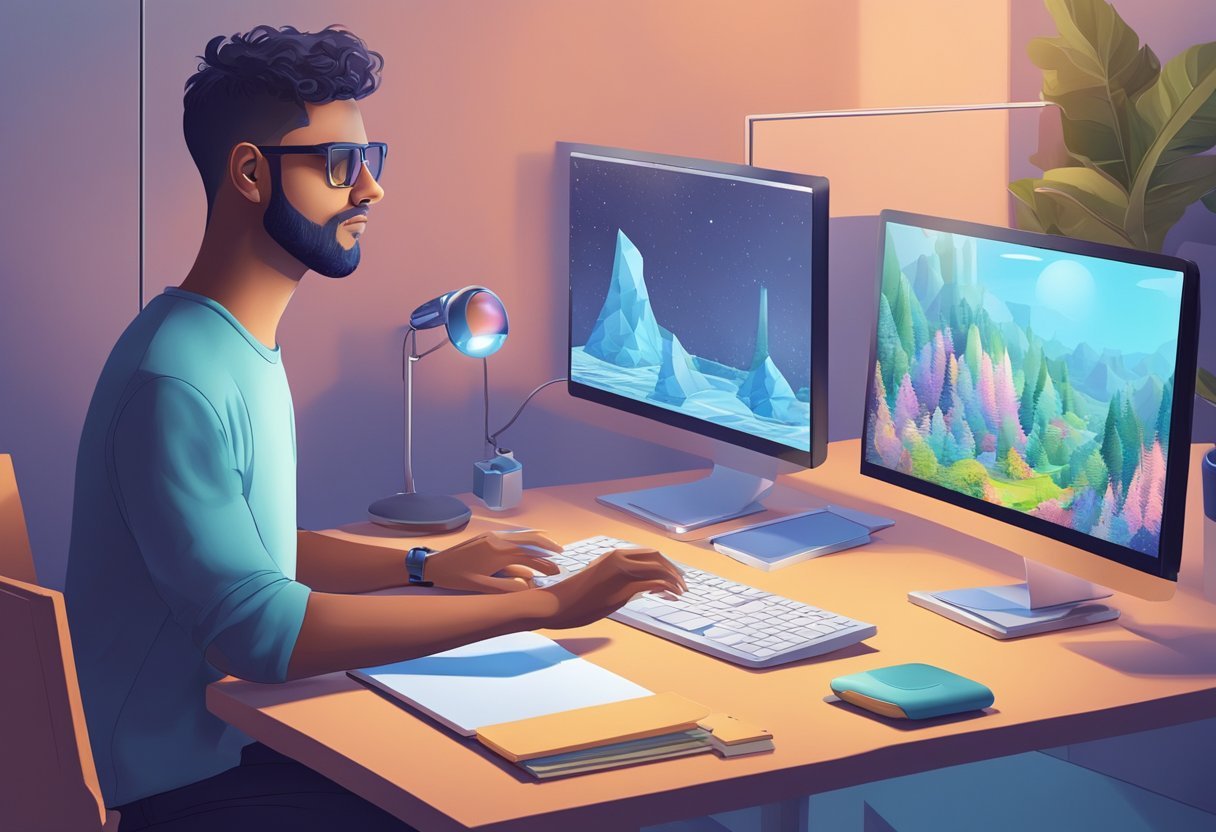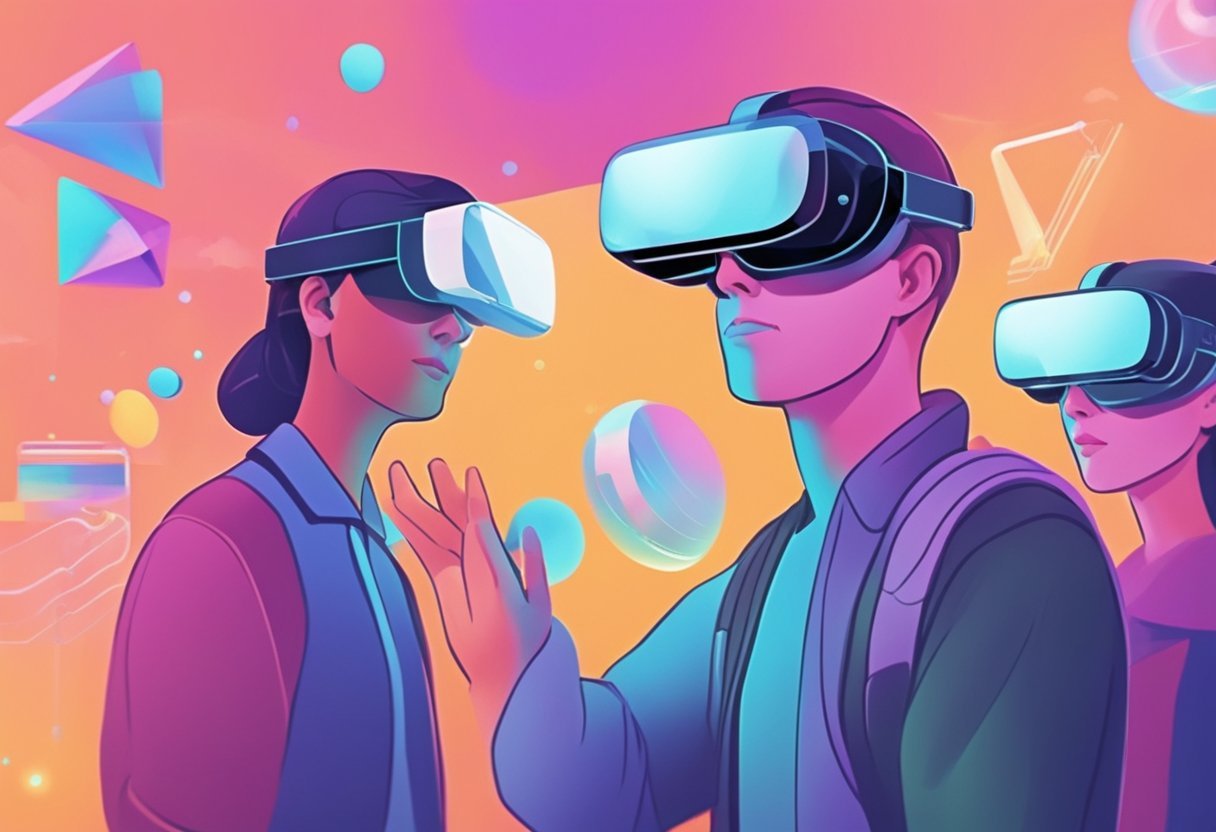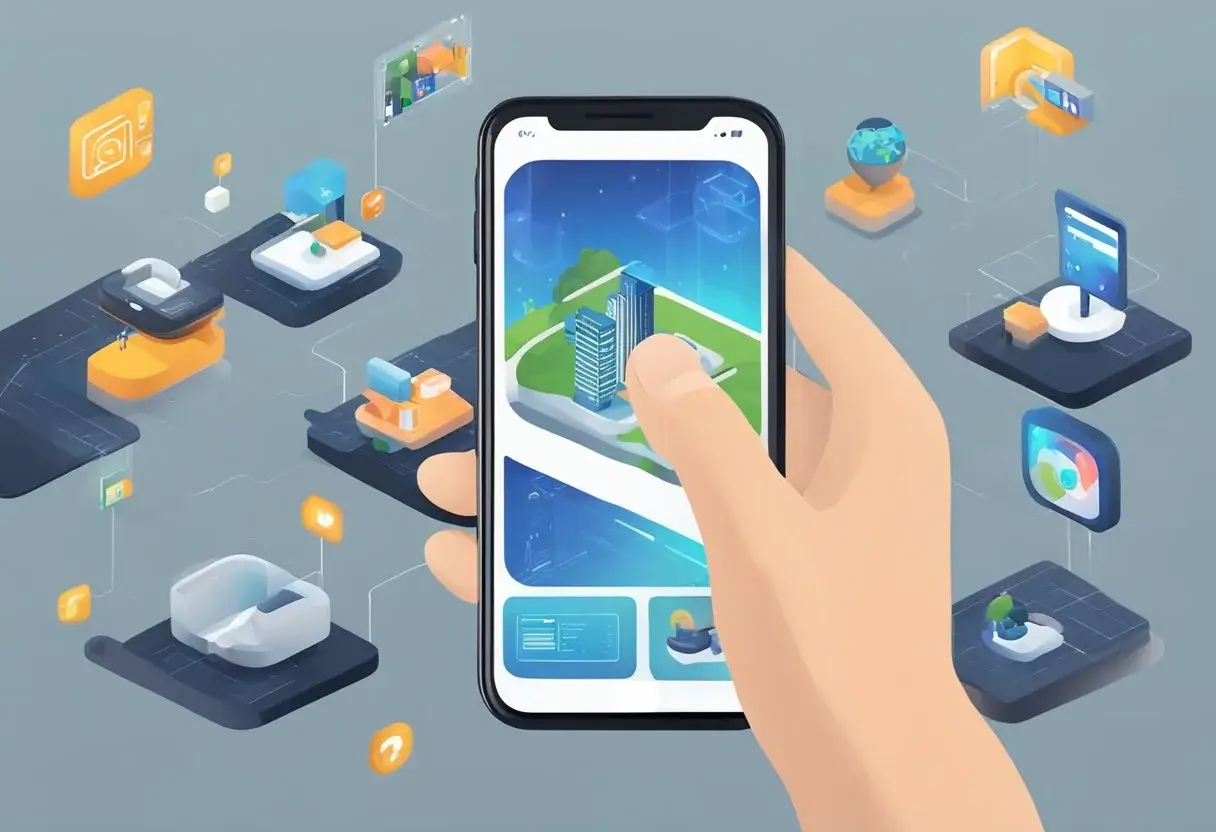Augmented reality (AR) technology has been rapidly evolving in recent years, and it has become a popular tool for creating immersive experiences. AR technology overlays digital content onto the real world, creating a unique interactive experience for users. With the increasing demand for AR content, it’s essential to know how to create it. In this article, I will provide you with a step by step guide of how to create augmented reality content.
Content creation is a crucial aspect of AR technology. To create AR content, you need to have a clear understanding of the technology, the target audience, and the message you want to convey. The first step in creating AR content is to determine what type of experience you want to create. Whether it’s a game, a marketing campaign, or an educational tool, you need to have a clear vision of what you want to achieve.
The creation of AR content requires a combination of technical skills and creativity. You need to have a good understanding of 3D modeling, animation, and programming to create AR content. You need to be creative and have a good eye for design to create engaging and visually appealing AR experiences. With the right skills and tools, creating AR content can be a fun and rewarding experience.
The Concept of Augmented Reality
Augmented Reality (AR) refers to a technology that overlays digital content onto the real world, creating an immersive and interactive experience for the user. AR technology uses a camera-enabled mobile device like a smartphone or tablet to display digital content on top of the physical world.
Types of AR Content
There are four main types of AR content: static, interactive, animated, and location-based. Static AR content is non-interactive and consists of 3D models or images that are superimposed onto the real world. Interactive AR content, on the other hand, allows users to interact with the digital content using gestures or touch. Animated AR content is similar to interactive content, but it includes animations that respond to the user’s actions. Location-based AR content is tied to a specific location and can only be accessed when the user is physically present in that location.
AR Technology Fundamentals
AR technology works by using a combination of sensors, cameras, and software to detect and track the user’s position and orientation in the real world. The digital content is then overlaid onto the real world in real-time, creating an immersive and interactive experience for the user. AR technology requires a powerful processor and a high-resolution display to render the digital content accurately and in real-time.
AR technology is a powerful tool for creating immersive and interactive experiences for users. By understanding the different types of AR content and the fundamentals of AR technology, businesses and content creators can create engaging and effective AR content that enhances the user’s real-world environment.
Creating AR Content: A Step-by-Step Guide
Creating augmented reality content is a fascinating process that can be both challenging and rewarding. To create AR content, one must first conceptualize the project, design 3D models and animations, and choose the right AR software.

Skills required to create augmented reality content:
- Understanding of AR Core Concepts: Knowledge of augmented reality principles and different types of AR experiences.
- 3D Modeling: Ability to create and manipulate 3D models using software like Blender or Maya.
- Programming: Proficiency in programming languages like C# or Java, often used in AR development environments.
- Graphic Design: Skills in graphic design to create visually appealing elements.
- UX/UI Design: Designing intuitive and engaging user interfaces and experiences.
- Spatial Audio Design: Creating audio that interacts with the AR environment.
- Animation: Ability to animate characters and objects in a 3D space.
- Problem-Solving: Troubleshooting issues that arise during development.
- Project Management: Organizing and managing an AR project from concept to completion.
- Knowledge of AR Platforms: Familiarity with AR development platforms like ARKit and ARCore.
Platforms for creating AR content
Unity
Unity is a leading game development platform that has expanded its capabilities to include augmented reality development. With Unity, creators can build immersive AR experiences using a comprehensive set of tools and features. The platform supports popular AR frameworks like ARKit for iOS and ARCore for Android, allowing for cross-platform development.
Unity’s asset store provides a vast library of 3D models, textures, and scripts to enhance AR projects. Its visual editor and support for scripting with C# make it accessible for both beginners and experienced developers. Unity offers advanced rendering, physics, and lighting features to create realistic AR effects.
Unreal Engine
Unreal Engine is another powerful game engine that is widely used for AR content creation, known for its high-fidelity graphics and real-time rendering capabilities. Unreal Engine’s AR development is supported by its visual scripting system, Blueprints, which allows developers to create complex AR interactions without writing code.
It also integrates with ARKit and ARCore, as well as other AR devices like the Microsoft HoloLens. The platform provides robust support for 3D graphics, physics, and particle systems, enabling developers to create dynamic and visually stunning AR experiences. Unreal Engine’s live link feature is particularly useful for AR, as it allows for real-time updates between the engine and external devices.
ARKit
ARKit is an augmented reality framework developed by Apple for iOS devices. It allows developers to create AR experiences that seamlessly blend digital objects with the real world. ARKit features include face tracking, motion capture, and environmental understanding, which enable the creation of interactive and immersive AR apps.
With each update, Apple adds more advanced capabilities to ARKit, such as LiDAR support for improved depth sensing. ARKit is integrated directly into Xcode, Apple’s development environment, making it a streamlined choice for developers already familiar with Apple’s ecosystem.
ARCore
ARCore is Google’s platform for building augmented reality experiences on Android devices. It offers developers motion tracking, environmental understanding, and light estimation to create realistic and responsive AR content. ARCore’s Cloud Anchors feature allows for shared AR experiences across multiple devices, and its Augmented Images API can trigger AR content from 2D images like posters or packaging. Google continues to improve ARCore with additional features and broader device support, making it a competitive choice for Android-focused AR development.
Vuforia
Vuforia is an AR software development kit (SDK) that specializes in image recognition and offers a wide range of features for creating AR content. It is known for its robust tracking capabilities, including the ability to recognize and track images, objects, and environments.
Vuforia supports both Unity and native development for iOS and Android, making it a versatile option for developers. It offers features like Vuforia Ground Plane for placing AR content on horizontal surfaces and Vuforia Model Targets for recognizing and tracking complex 3D objects. Vuforia’s extended tracking capabilities maintain the AR experience even when the target image is no longer in view, providing a seamless user experience.
How to create augmented reality content
Creating augmented reality content may seem like a daunting task, but it can be achieved with the right tools and techniques. Here are some steps to follow when creating augmented reality content:
- Determine the purpose of the content: Before creating augmented reality content, it is important to determine the purpose of the content. This will help in deciding what type of content to create, the target audience, and the platform to use.
- Choose the right tools: There are many tools available for creating augmented reality content. It is important to choose the right tool that suits your needs and skill level. Some popular tools for creating augmented reality content include Adobe Aero, Overly AR Creator, and Banuba.
- Create the content: Once you have determined the purpose of the content and chosen the right tools, it is time to create the content. This involves designing and creating the 3D models, animations, and other digital assets that will be used in the augmented reality experience.
- Test and refine: After creating the content, it is important to test it and refine it until it meets your expectations. This involves testing the content on different devices and platforms to ensure that it works as intended.
Conceptualizing Your AR Project
The first step in creating AR content is to conceptualize the project. This involves identifying the purpose of the project, the target audience, and the desired outcome. Once these factors have been identified, the creator can begin to develop a plan for the project.
Designing 3D Models and Animations
After conceptualizing the project, the next step is to design 3D models and animations. There are several software programs that can be used for this purpose, including Blender and Tinkercad. These programs allow creators to design and manipulate 3D objects and animations that can be used in the AR project.
Choosing the Right AR Software
The final step in creating AR content is to choose the right AR software. There are several software programs available for creating AR content, including ARKit, ARCore, and Vuforia. Each of these programs has its own strengths and weaknesses, so it is important to choose the right one for the project.
Creating AR content requires a step-by-step approach that involves conceptualizing the project, designing 3D models and animations, and choosing the right AR software. With the right tools and a clear plan, anyone can create stunning AR content that engages and entertains audiences.
Integrating AR Content with Devices and Platforms

Augmented reality content can be used on a variety of devices, including smartphones and tablets. To optimize content for these devices, it’s important to consider the screen size, resolution, and aspect ratio.
Optimizing Content for Smartphones and Tablets
Smartphones and tablets are the most common devices used to view AR content. When designing AR content for these devices, it’s important to consider the screen size and resolution. To ensure that the AR content is displayed correctly, it’s recommended to use a resolution of at least 1080p. It’s important to consider the aspect ratio of the device, as this can affect the way the AR content is displayed.
Publishing to Social Media and Web Platforms
Publishing AR content to social media platforms can be a great way to reach a wider audience. Many social media platforms, such as Snapchat and Instagram, have built-in filters and effects that allow users to create and share AR content. To publish AR content to these platforms, it’s important to use the appropriate file format and size.
Web-based 3D viewers are another platform for publishing AR content. These viewers allow users to view AR content directly in their web browser, without the need for a separate app. When publishing AR content to web-based viewers, it’s important to use a file format that is compatible with the viewer.
Integrating AR content with devices and platforms requires careful consideration of the device’s screen size, resolution, and aspect ratio. Publishing AR content to social media and web platforms requires using the appropriate file format and size. By following these guidelines, creators can ensure that their AR content is displayed correctly on a variety of devices and platforms.
Enhancing User Engagement and Interaction
Creating augmented reality content is all about enhancing user engagement and interaction. By incorporating audio and video elements, utilizing GPS and image tracking, and providing an immersive experience, you can create content that keeps users engaged and coming back for more.
Incorporating Audio and Video Elements
One way to enhance user engagement is to incorporate audio and video elements into your augmented reality content. By adding sound effects, music, or voiceovers, you can create a more immersive experience that captures the user’s attention and keeps them engaged. Incorporating video elements such as animations or 3D models can help to explain complex concepts or showcase products in a more interactive way.
Utilizing GPS and Image Tracking
Another way to enhance user engagement is to utilize GPS and image tracking. By using GPS, you can create location-based experiences that are tailored to the user’s surroundings. For example, you can create an augmented reality game that is only accessible in a certain location. Image tracking, on the other hand, allows you to create experiences that are triggered by specific images. For example, you can create a virtual try-on experience that is triggered by scanning a product image.
Measuring Success and Monetizing AR Content

Gathering Insights through Feedback
Measuring the success of an AR campaign is crucial to understanding its effectiveness and making improvements in the future. One way to gather insights is through feedback from users. Gathering feedback can help identify areas of improvement and provide valuable information about the target audience.
AR content creators can use surveys, focus groups, and user testing to gather feedback. This information can help creators understand how users interact with the content and what changes could be made to improve the user experience.
Strategies for Increased Revenue
Monetizing AR content is a key consideration for content creators. There are several strategies that can be used to increase revenue and profitability. One common strategy is to charge for access to the AR content. This can be done through a one-time fee or a subscription model.
Another strategy is to sell advertising space within the AR experience. This can be an effective way to generate revenue while also providing value to advertisers. Content creators can also partner with brands to create sponsored AR experiences.
Market research is essential for understanding the target audience and identifying potential revenue streams. Content creators should consider the target audience’s purchasing habits and preferences when developing a monetization strategy. Measuring the success of AR content and developing a monetization strategy are critical for content creators. Gathering feedback from users and implementing strategies for increased revenue can help ensure the success of an AR campaign.
Frequently Asked Questions

What are the best tools for creating augmented reality content without cost?
There are several free tools available for creating augmented reality content. Some of the most popular ones include Unity, Vuforia, and ARToolKit. These tools offer a range of features and functionalities that can help you create engaging AR experiences without any cost.
Which software is recommended for beginners interested in developing augmented reality applications?
For beginners interested in developing augmented reality applications, Unity is a great software to start with. It is a powerful and easy-to-use platform that offers a range of tools and features for creating AR experiences. Unity also has a large community of developers who can provide support and guidance.
What steps are involved in creating an augmented reality experience?
Creating an augmented reality experience involves several steps, including defining the concept, designing and developing the content, testing and refining the experience, and deploying it to the target audience. It is important to have a clear understanding of the target audience and the objectives of the experience before starting the development process.
How can I design and develop 3D models specifically for augmented reality?
To design and develop 3D models specifically for augmented reality, you can use software like Blender, Maya, or 3ds Max. These tools offer a range of features and functionalities for creating high-quality 3D models that can be used in AR experiences. It is important to optimize the models for AR by reducing the polygon count and optimizing the texture maps.
What are the essential programming languages to learn for augmented reality development?
The essential programming languages to learn for augmented reality development include C#, C++, Java, and JavaScript. These languages are commonly used for developing AR applications and offer a range of features and functionalities for creating engaging experiences.
How can augmented reality be integrated into a website effectively?
To integrate augmented reality into a website effectively, you can use web-based AR platforms like AR.js, A-Frame, or Three.js. These platforms offer a range of tools and features for creating AR experiences that can be easily integrated into a website. It is important to optimize the experience for the web by reducing the file size and optimizing the content for performance.




